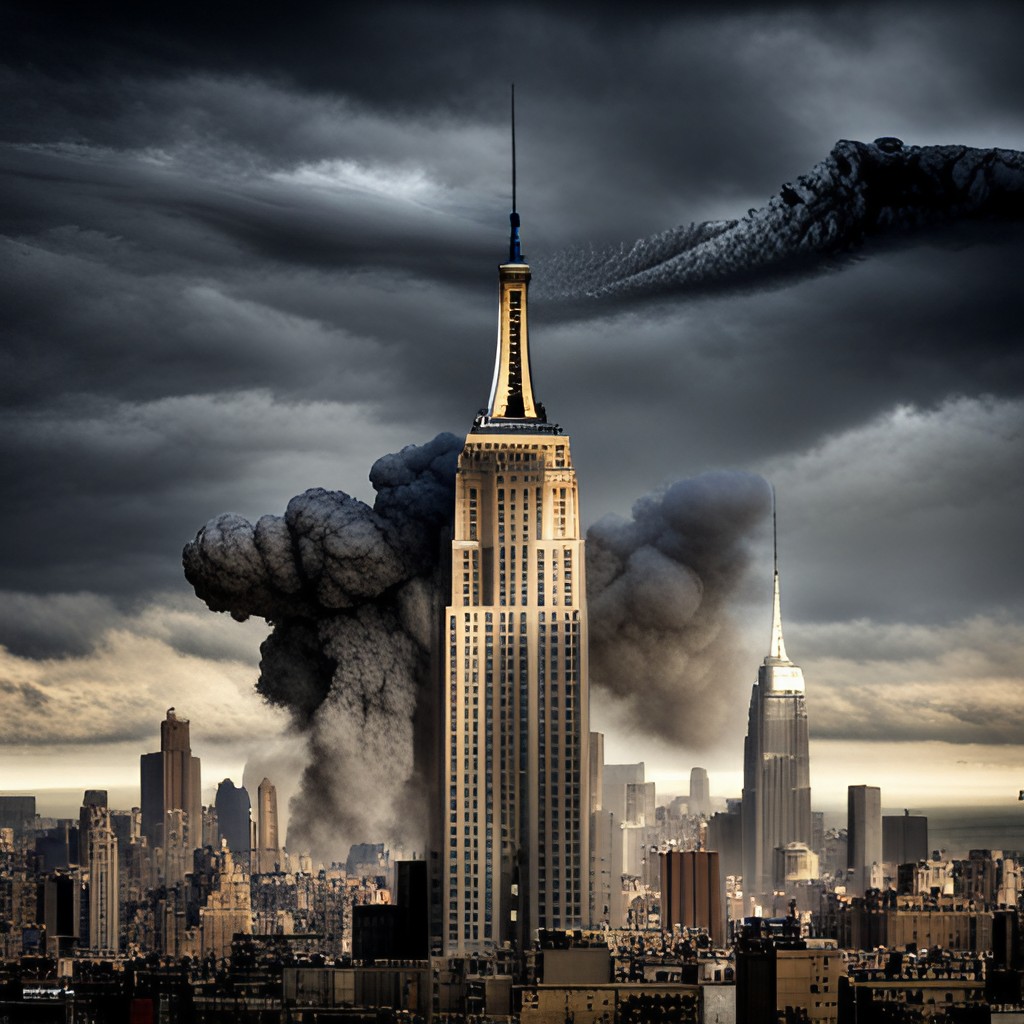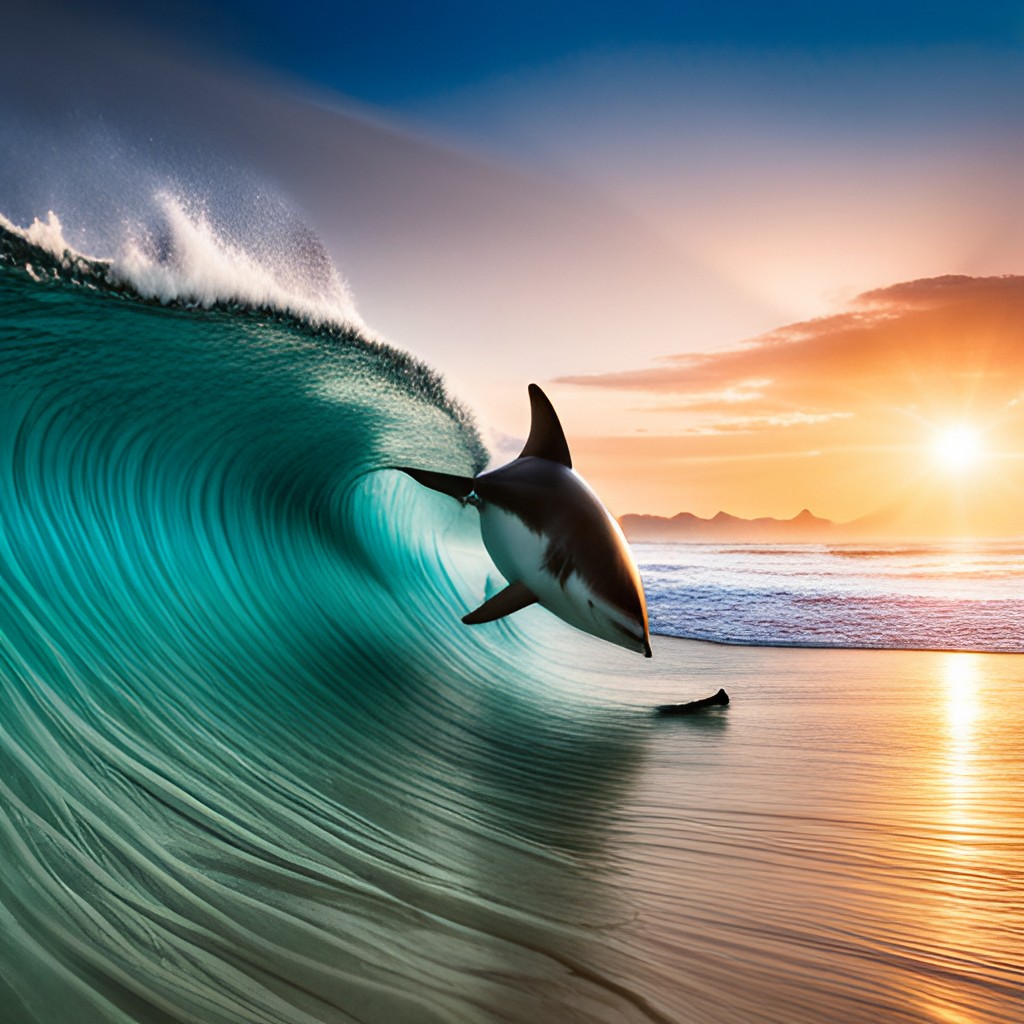Did a Novel AI Generator Make This Image?
Images created by artificial intelligence (AI) have been trending and even going viral of late. Until today, I’d yet to utilize any of the growing number of novel AI generators but got a little curious and wanted to see what all the buzz is about.
While my prompts were quick and simple, I was able to create all of the images in this article in the space of about 15 minutes. Now as I said, I’m a complete amateur and you’re probably able to tell that they’re fake right off the bat. I mean, take a look at the image up top… why are there TWO Empire State buildings? However, there are a lot of folks out there that are popping out some ultra-realistic images that are fooling news organizations, influencers, and us normal Joes.
I know several tools like Copyleaks that can help detect AI writing, so I got to wondering if there are ways you can tell whether someone used a novel AI generator for images. And since my internal musings always lead to a bit/a lot of obsessiveness, I took notes so I could put together an article to share.
And I learned some pretty cool stuff.
But first, for those of you that want to test your image-making skills, let’s take a look at some of the available options.
Novel AI Generators for Images
I signed up for a free trial on Jasper simply because a friend had told me about it, but there are some others that people swear by. I can’t personally vouch for them but wanted to share what I found.
Here are 5 more top ones:
– Deep Dream Generator – Developed by Google, this one uses deep learning algorithms to transform images into complex and visually stunning artwork. It takes input from its user and then creates a dreamlike scene using elements from the original image as its “building blocks.”
– Sensei GenAI – Adobe Systems developed it and it enables users to create breathtaking visuals and immersive experiences. With a suite of tools including Natural Language Processing (NLP) and Computer Vision (CV), Sensei helps users generate realistic images, videos, and motion graphics that are indistinguishable from real-life creations.
– DALL- E2 – The first novel AI generator for images and is designed to create images based on text descriptions. Built by OpenAI, it was developed using Generative Adversarial Networks (GANs), which are models that can learn to imitate real-world data. These GANs are trained on vast amounts of data, which gives them the ability to generate realistic images.
– Midjourney – Requires Discord but combines natural language processing and computer vision. Midjourney’s AI technology helps to create images from text descriptions, taking into consideration elements like color, texture, layout, background, and more. It’s one of the most popular and versatile tools available on the market and is used by game developers and marketers alike.
– Dream Studios – With an intuitive and user-friendly design coupled with powerful tools and features, Dream Studio provides users with a unique novel AI generator to create high-quality images for marketing, data visualization, and other purposes.
So, now that we’ve seen some of the available tools, let’s see if there are any telltale signs to help you differentiate between real and computer-generated images.
The list goes on, but the point is that these tools are becoming more accessible than ever before and this opens up a world of possibilities for digital creatives.
So now that you know what’s out there, let’s talk about how to tell if someone used a novel AI generator for images.
How to detect AI-generated images
AI-generated images have become a problem for several reasons. For starters, they’re often used to spread misinformation or deceive viewers by making them believe that the image in question is real. Many people have unknowingly shared AI-generated photos on social media, thinking that they were true. This can lead to confusion and inaccurate information being spread across the internet.
The image above is ridiculously easy to tell that it was created with a novel AI generator. First off, that’s a mirror behind him and instead of reflecting the back of his head, it’s showing him facing toward the mirror. Secondly, the two dudes barely look like they could be brothers, let alone the same guy. The one in the mirror has curly hair that isn’t even styled the right way and his mustache is much thinner as it tappers to the side. Not mention that the eyes look nothing alike.
But, there are a lot of folks out there waaaaaaay better than me at creating these AI images and fortunately, there are a few ways to tell if an image is AI-generated. Here are some of the best ways:
Visual and Structural Analysis
When examining an image, look for bright or vibrant colors, unusual patterns or symmetry, and pixelation or blurring. AI-generated images tend to have more vivid colors than natural tones as well as patterns that are often too perfect or symmetrical. There may also be pixelation or blurriness around the edges of the image where it has been stretched to fit the frame.
AI-generated images tend to have a lack of details in certain areas that would normally be seen in real photographs. For example, if you look closely at an AI-generated image of a person, their eyes may appear “empty” or overly smooth due to the lack of imperfections and creases usually found in real eyes. Much like the image above.
Content Analysis
In addition to visual analysis, content analysis can be used to detect AI-generated images. Look for unnatural perspective or scale changes, obvious digital artifacts, and inaccurate or inconsistent representations in the image. These features are usually a good indication that the photo has been generated by an AI algorithm. The more of these features present in the image, the higher the likelihood it was generated by AI.
As you can see, there’s all sorts of wrong with this one. The main one being that the wave appears to be on the beach itself (see the breaking waves in the background) and the shark’s fins are all wrong. And WHERE TF IS HIS FACE???
Source Analysis
Finally, take a look at the source of the image. Where did it originate? Does it have an author or creator listed? The lack of information on the image’s origin or author may indicate it was made by a novel AI generator. If you can’t find any attribution to the creator, there’s a chance that the image is courtesy of AI.
Conclusion
There are ways to detect if an image is AI-generated, such as looking for bright colors, unusual patterns and symmetry, pixelation or blurring, lack of details in certain areas, unnatural perspective or scale changes, digital artifacts, and inaccurate representations. In addition, if the source of the image cannot be found or there is no author listed, then it might have been made with a novel AI generator. It’s important to remember that AI-generated images can spread misinformation, so always double-check sources before sharing any images online.
Have you seen an AI-generated image? Share your experience in the comments below!



